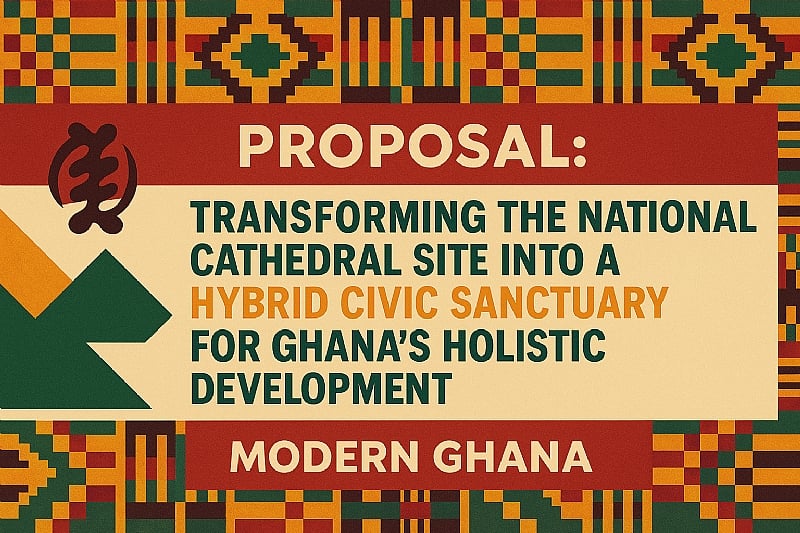Executive Summary
In light of mounting financial constraints, public debate, and governance priorities, this proposal advocates for a transformational reimagining of the National Cathedral site as a Hybrid Civic Sanctuary—a multi-functional complex that honors Ghana’s spiritual heritage while directly addressing pressing national needs in healthcare, education, and interfaith unity. This vision seeks not to erase the original Cathedral intent, but to evolve it into a legacy space of healing, learning, and civic reflection.
Background and National Context
The National Cathedral was conceived as a sacred infrastructure, designed for state funerals, interdenominational prayer, and faith-based diplomacy. However, with only a fraction completed and sustained public scrutiny, its long-term viability as a singular religious edifice is in question. More urgently, Ghana faces deep gaps in accessible mental health services, primary care, educational resources, and civic engagement structures. These needs are not parallel to spirituality—they are deeply entwined.
Vision and Justification
A Hybrid Civic Sanctuary reflects the philosophical wisdom embedded in Ghana’s governance traditions: that service to God must coexist with service to humanity. By repurposing and enhancing the existing structure, the government can honor interfaith aspirations while enshrining its commitment to social equity, constitutional integrity, and intergenerational responsibility.
Core Components of the Sanctuary
This civic transformation would retain the central Interfaith Chapel for ceremonial and national prayers. Surrounding it would be:
A public Health Pavilion offering outpatient services and mental health consultations, serving underprivileged communities and hosting mobile outreach programs. A Civic Education Hall for leadership development, ethics training, and youth participation in democratic processes. A Heritage Museum and National Archive to preserve sacred artifacts and historical legacies across faith and culture. An Educational Resource Annex with scholarship support, vocational guidance, and partnerships with academic institutions. A Training Wing for nurses, paramedics, and crisis responders—blending faith-based care with professional service.
Symbolic and Cultural Integration
Architectural and interior design should reflect Ghana’s cultural narrative: Kente-influenced geometry, Adinkra symbols of strength (Eban), humility (Dwennimmen), and adaptability (Nkyinkyim) adorning the Sanctuary’s spaces. This ensures spiritual continuity and invites civic dignity.
Strategic Benefits
This transformation will demonstrate bold, ethical stewardship. It will:
Alleviate public health burdens, especially mental wellness challenges Foster civic maturity and inclusive dialogue across all sectors Amplify Ghana’s standing in regional peacebuilding and interfaith diplomacy Inspire younger generations to see public service as sacred duty
Conclusion and National Call
Ghana must not merely preserve monuments—it must transform them into living vessels of service. Let the Cathedral site become a sanctuary not only of prayer, but of healing, learning, and national renewal. In doing so, we shall turn controversy into consensus, vision into action, and space into purpose.


